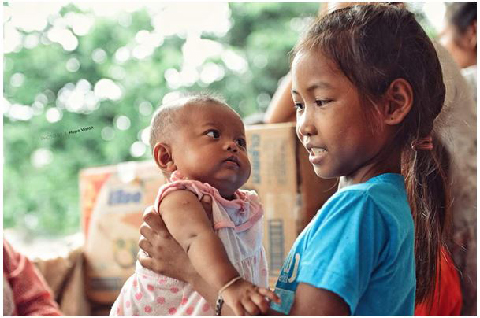WHO is working with partners to provide support to the Ministry of Health for the coordination of health service provision and relief efforts to 7,324 displaced people affected by the floods including 3,539 people now living in shelters.
From 24-25 July, 24 patients were admitted in Attapeu Provincial Hospital while another 159 cases were admitted at Sanamxay District Hospital. Forty-eight people were treated for trauma, 71 for fever and others for ailments like rash, diarrhoeal and injuries.
A total of 2,979 people have now accessed health services, with 600 using the health services available in the shelters. Health workers are organized into teams; there are three fixed and four mobile health teams with five people per team working in the seven shelters. These local teams are working in coordination with the medical teams from China, Malaysia, Republic of Korea, Thailand and Viet Nam who have arrived to work with the local health authority.
Psychosocial support for mental health and post traumatic stress disorder was requested by the Ministry, as well as the implementation of Integrated Management of Newborn and Child Illnesses (IMNCI). WHO has provided training to national clinicians from Mahosot Hospital and they have been deployed to the affected areas to provide psychological first aid.
A rapid assessment of five shelters found the facilities overcrowded, with insufficient supply of water, sanitation and hygiene items, and mosquito bed nets. Five tonnes of solid waste needs to be properly disposed.
The risk of malaria transmission is especially high during the rainy season, and the risk of transmission of dengue and Japanese encephalitis is also expected to increase post flooding. These areas in Sanamxai District have moderate risk of human exposure to malaria-carrying mosquitoes and favourable breeding conditions. Given the current conditions on the ground, there is a likelihood that transmission of malaria will increase over an extended period from now till early October. Vector control activities have also currently been disrupted due to the floods and need to be restarted and intensified.
Other risks including food and waterborne diseases such as dysentery, typhoid and cholera will also be of concern due to lack of access to safe drinking water and adequate sanitation. WHO has supplied water disinfection supplies (to cover 3500 people for 10 days) and water purification tablets (supplies for 3 months). The vaccination team will provide protection against diseases including tetanus, diphtheria, pertussis, polio, measles and rubella to adolescents and children in the field.
WHO Representative Dr Juliet Fleischl said, “We are getting regular reports from the field at the Emergency Operation Centre. We continue to monitor the situation; we will work with the Ministry of Health to update the response plan. We reiterate our support to the government for the floods in Attapeu and across the country. ”
Situation Report No. 4 Lao PDR: Flooding in Sanamxay District

3,539 people are now living in shelters
